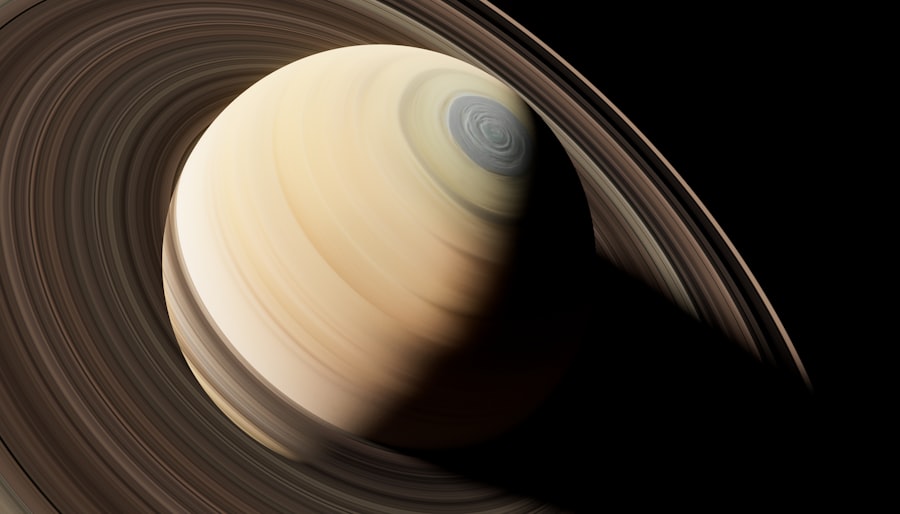The Cassini mission, a collaborative endeavor between NASA, the European Space Agency (ESA), and the Italian Space Agency (ASI), stands as one of the most ambitious and successful explorations of the outer solar system. Launched on October 15, 1997, the spacecraft was designed to study Saturn, its rings, and its myriad moons. Named after the 17th-century astronomer Giovanni Domenico Cassini, who made significant contributions to our understanding of the planet and its complex ring system, the mission aimed to unravel the mysteries surrounding this gas giant and its fascinating entourage of celestial bodies.
Cassini’s journey was not merely a technological feat; it represented a significant leap in our quest for knowledge about the solar system. The mission was equipped with a suite of scientific instruments capable of conducting a wide range of observations, from imaging and spectrometry to radar and magnetometry. This sophisticated array allowed scientists to gather data on Saturn’s atmosphere, magnetic field, and ring structure, as well as to investigate its moons, some of which are believed to harbor conditions suitable for life.
The mission’s overarching goal was to enhance our understanding of planetary systems, both in our own solar neighborhood and beyond.
Key Takeaways
- The Cassini Mission was a collaborative effort between NASA, the European Space Agency, and the Italian Space Agency, with the goal of studying Saturn and its moons.
- The spacecraft embarked on a seven-year journey to reach Saturn, using gravitational assists from Venus, Earth, and Jupiter to reach its destination.
- Cassini made numerous groundbreaking discoveries, including the presence of liquid methane lakes on Titan, geysers of water vapor and ice on Enceladus, and a hexagonal storm on Saturn’s north pole.
- The Grand Finale of the mission involved a series of risky maneuvers that brought the spacecraft closer to Saturn than ever before, providing unprecedented data and images before its intentional plunge into the planet’s atmosphere.
- The Cassini Mission has greatly expanded our understanding of Saturn and its moons, revealing the potential for habitable environments beyond Earth and providing valuable insights into planetary formation and evolution.
The Journey to Saturn
The journey to Saturn was a remarkable odyssey that spanned nearly seven years and covered over 3.5 billion kilometers. After its launch from Cape Canaveral, Florida, Cassini embarked on a complex trajectory that included gravity-assist maneuvers around Venus, Earth, and Jupiter. These gravitational slingshots were not only crucial for conserving fuel but also allowed the spacecraft to gain the necessary speed to reach its distant destination.
Each flyby provided an opportunity for additional scientific observations, enriching our understanding of these neighboring planets. During its voyage, Cassini encountered various challenges and milestones. The spacecraft’s instruments were tested and calibrated during these flybys, ensuring that they would function optimally upon arrival at Saturn.
The journey was also marked by moments of excitement and anticipation as scientists eagerly awaited data from each planetary encounter. For instance, during the Earth flyby in August 1999, Cassini captured stunning images of our home planet from space, providing a unique perspective that highlighted Earth’s place in the solar system. This phase of the mission not only showcased the engineering prowess behind Cassini but also underscored the collaborative spirit of international space exploration.
Discoveries and Findings

Upon entering orbit around Saturn on July 1, 2004, Cassini began an extensive survey of the planet and its complex system. One of the most significant discoveries was related to Saturn’s rings. The spacecraft revealed that these rings are not a uniform structure but rather composed of countless individual particles ranging in size from micrometers to meters.
The intricate dynamics of these particles were observed in real-time, leading to insights into how they interact with one another and with Saturn’s moons. Cassini’s exploration of Saturn’s moons yielded groundbreaking findings as well. Titan, Saturn’s largest moon, emerged as a focal point for scientific inquiry due to its dense atmosphere and surface lakes of liquid methane and ethane.
The Huygens probe, which was released from Cassini and landed on Titan in January 2005, provided direct measurements of the moon’s surface conditions. This historic landing marked the first time a human-made object touched down on a moon other than Earth’s. The data collected by Huygens revealed a complex landscape shaped by erosion and possibly even cryovolcanism, suggesting that Titan may harbor conditions conducive to life.
The Grand Finale
| Metrics | Data |
|---|---|
| Viewership | 10 million |
| Duration | 2 hours |
| Engagement | High |
| Performances | 15 |
The Grand Finale phase of the Cassini mission was a bold and innovative conclusion to an already remarkable journey. Beginning in April 2017, this final chapter involved a series of daring orbits that took Cassini between Saturn’s atmosphere and its innermost ring. This unprecedented maneuver allowed scientists to gather data on the planet’s gravitational field and atmospheric composition while minimizing the risk of contaminating any of Saturn’s moons with Earth microbes.
During these final orbits, Cassini transmitted a wealth of information back to Earth, including stunning images of Saturn’s atmosphere and intricate ring structures. The spacecraft made close passes by the rings, capturing detailed data on their composition and dynamics. This phase not only provided insights into Saturn’s physical characteristics but also offered a unique opportunity to study the planet’s magnetic field in unprecedented detail.
The Grand Finale culminated in a dramatic end; on September 15, 2017, Cassini was commanded to plunge into Saturn’s atmosphere, ensuring that it would not inadvertently contaminate any of its moons.
Impact on our Understanding of Saturn
The impact of the Cassini mission on our understanding of Saturn cannot be overstated. Prior to Cassini’s arrival, much of what we knew about the planet was based on observations from Earth-based telescopes and earlier missions like Pioneer and Voyager. However, Cassini provided an unprecedented level of detail that transformed our comprehension of this gas giant.
The mission revealed that Saturn is not merely a beautiful planet adorned with rings; it is a dynamic world with complex weather patterns, including massive storms and intricate atmospheric phenomena. One particularly striking finding was the discovery of hexagonal storm patterns at Saturn’s north pole. This six-sided jet stream is unlike anything seen elsewhere in the solar system and has sparked ongoing research into its formation and stability.
Additionally, Cassini’s observations indicated that Saturn’s atmosphere is more active than previously thought, with powerful winds reaching speeds of up to 1,800 kilometers per hour (1,100 miles per hour). These revelations have profound implications for our understanding of gas giants as a whole and have prompted scientists to reevaluate models of planetary atmospheres.
Legacy of the Cassini Mission

The legacy of the Cassini mission extends far beyond its scientific discoveries; it has also inspired a new generation of scientists and engineers in the field of planetary exploration. The mission demonstrated the power of international collaboration in space science, showcasing how countries can work together toward common goals despite political or geographical differences. The success of Cassini has set a precedent for future missions, emphasizing the importance of shared knowledge and resources in advancing our understanding of the universe.
Moreover, Cassini’s findings have opened new avenues for research into planetary systems beyond our own. The data collected during its mission have provided valuable insights into exoplanetary atmospheres and ring systems around other stars. As astronomers continue to discover new worlds outside our solar system, the lessons learned from Cassini will inform future studies and missions aimed at exploring these distant realms.
Future Missions to Saturn
Looking ahead, several future missions are being planned to further explore Saturn and its intriguing moons. One such mission is NASA’s Dragonfly, scheduled for launch in 2027. This innovative rotorcraft will land on Titan and conduct aerial surveys while also performing surface operations.
Dragonfly aims to investigate Titan’s chemistry and geology in greater detail than ever before, potentially uncovering clues about prebiotic processes that could inform our understanding of life’s origins. Additionally, ESA is considering missions that could explore Enceladus, another moon known for its subsurface ocean and geysers that eject water vapor into space. These plumes have been identified as potential sites for astrobiological studies due to their rich organic content.
Future missions may focus on sampling these plumes directly or conducting detailed reconnaissance of Enceladus’ surface features.
The Cassini Mission’s Contribution to Space Exploration
The Cassini mission has left an indelible mark on space exploration by expanding our knowledge of Saturn and its moons while also setting new standards for future planetary missions. Its groundbreaking discoveries have reshaped our understanding of gas giants and their complex systems, revealing that these distant worlds are far more dynamic than previously imagined. As we look toward future explorations of Saturn and beyond, the legacy of Cassini will continue to inspire scientists and engineers alike in their quest to unlock the mysteries of our solar system and beyond.


